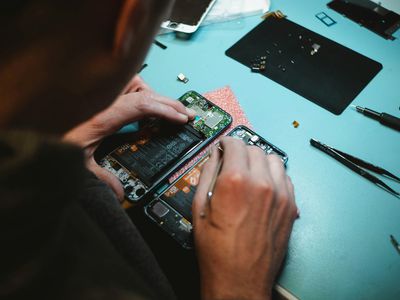
Safeguarding Modern Communication: How Apple's PQ3 Thwarts Future Quantum Intrusions

Safeguarding Modern Communication: How Apple’s PQ3 Thwarts Future Quantum Intrusions
The upcoming iOS 17.4 update brings PQ3 encryption to iMessage. This cryptographic protocol anticipates future threats that may arrive in the era of quantum computing. In theory, the PQ3 implementation makes iMessage the most secure messaging platform in the world.
iMessage was one of the first mainstream messaging platforms to implement end-to-end encryption (E2EE) by default. When a message is protected by E2EE, it’s turned into a mess of gibberish that can only be decoded by a set of cryptographic keys. The message’s sender and recipient are the only ones who own these keys. If a hacker intercepts your message, or if an Apple employee decides to invade your privacy, they’ll be met with an unreadable string of text.
Cryptographic keys are based on math problems that today’s computers cannot solve. But security experts believe that quantum computers, which do not exist yet, will solve these classical math problems. Hackers and governments may prepare for this development by collecting and storing encrypted data for decryption at a later date—a so-called “Harvest Now, Decrypt Later” scheme that would retroactively compromise E2EE messages.
Therefore, a protocol that defends against quantum attacks needs to exist before we enter the era of quantum computing. Signal introduced such a protocol, called PQXDH , back in September 2023. Apple is now doing the same with PQ3 in iMessage.
Like Signal’s PQXDH protocol, PQ3 is a “post-quantum cryptography” method that uses new algorithms to generate keys. These algorithms—math problems—should be too difficult for quantum computers to solve. Apple’s method provides an additional layer of protection by regularly generating new keys with “PQC rekeying,” meaning that only one portion of a conversation will be compromised if a key is cracked.
The PQ3 method also retains the protections of “classical cryptography,” specifically E2EE. And iMessage is still protected by Contact Key Verification , a security protocol that prevents hackers from impersonating a message’s sender or recipient.
There isn’t a standardized way to rank cryptography methods in the post-quantum era. So, Apple has created its own ranking system which designates E2EE as a “Level 1” protection method. Signal’s PQXDH implementation is “Level 2,” while Apple’s PQ3 is “Level 3” because it utilizes PQC rekeying, which is currently unique to iMessage.
Post-quantum cryptography will be enabled by default in the iOS 17.4 update, and it’s already live in the 17.4 beta. For additional details on PQ3 in iMessage, check out Apple’s blog .
Source: Apple
Also read:
- [New] 2024 Approved Becoming a OneStream Pro Tips and Tricks From the Pros
- [New] Taming High-Quality Streams (OBS) for 2024
- [Updated] In 2024, Tips for Engaging Video Blog Storytelling
- [Updated] Top Screen Picks for Professional Image Enhancers for 2024
- [Updated] Unlocking the Full Potential of VLC Media Player on Mac
- 2024 Approved 3 Simple Steps Unlock Your Instagram Collaboration Potential
- 2024 Approved Premium Sound to Text Converters
- In 2024, Top Places for Discovering Premium Soundtracks From Instagram & Designing Exceptional Ringtone Alerts
- In 2024, Unlocking Premiere Pro's LUT Potential
- New 2024 Approved Achieve Film-Quality Video A Step-by-Step Guide to Final Cut Pro X
- Rapid Revision: Enhanced Acer Drivers Update for Win10 Efficiency
- Solutions to Spy on Realme GT Neo 5 SE with and without jailbreak | Dr.fone
- Top Stock Photos Their Journey to Internet Fame for 2024
- Wintry Wonderland Olympic Moments From Beijing 2022 for 2024
- Title: Safeguarding Modern Communication: How Apple's PQ3 Thwarts Future Quantum Intrusions
- Author: Mark
- Created at : 2024-12-28 17:40:04
- Updated at : 2025-01-02 16:47:06
- Link: https://some-guidance.techidaily.com/safeguarding-modern-communication-how-apples-pq3-thwarts-future-quantum-intrusions/
- License: This work is licensed under CC BY-NC-SA 4.0.